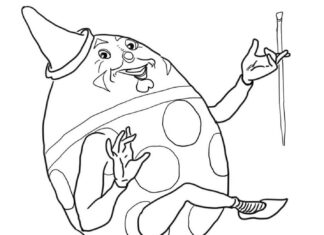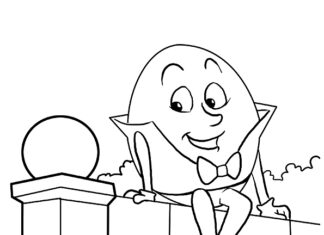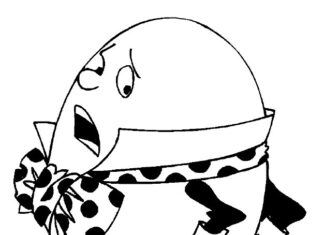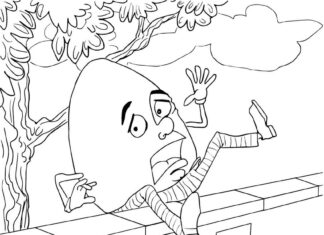"Humpty Dumpty" is a nursery rhyme that first appeared in a collection of nursery rhymes for children entitled "Mother Goose's Melody" in 1803. It is one of the elements of English children's literature.
Humpty Dumpty Coloring Book
information
- Egg form: In the nursery rhyme "Humpty Dumpty" the main character is an anthropomorphic egg named Humpty Dumpty. He is a lyrical character whose adventures are told in rhyme.
- Fall from the wall: The nursery rhyme tells the story of Humpty Dumpty, who sat on a wall and then fell down and could not be put back together again. His fall is the centerpiece of this rhyming story.
- No details available: The nursery rhyme doesn't give much detail about the character of Humpty Dumpty or the circumstances of his demise. It leaves many questions open to interpretation.
- Popularity: The nursery rhyme "Humpty Dumpty" is one of the most famous and quoted in children's literature. It is often used in children's games, plays and performances.
- Symbolism and interpretations: While the rhyme may seem like a simple children's story, many scholars and literary critics suggest that it can have different interpretations and symbolize different aspects, such as failures, the inability to repair damage or the loss of innocence.
- Art and culture: The character of Humpty Dumpty often appears in various artistic works, such as illustrations, paintings and films. It often becomes a part of cultural heritage.
- Educational applications: The nursery rhyme "Humpty Dumpty" is often used as an educational tool for language and rhythmic learning for children.
- Text variations: There are many versions of the text of the nursery rhyme "Humpty Dumpty", which differ slightly in the form of words or rhymes. There may be some changes in the text in different regions.
- Appearance in popular culture: The character of Humpty Dumpty also appears in various works of popular culture, including movies, TV series and books, as a reference to the tradition of children's literature.
trivia
- No character description: Nowhere in the original version of the "Humpty Dumpty" rhyme is it described that Humpty Dumpty is an egg. The modern interpretation of the character as an anthropomorphic egg came later.
- Controversy over the meaning of: There is much controversy over the meaning and interpretation of the rhyme. Some researchers speculate that it may refer to specific historical or political events, but there is no certain evidence.
- A trace in history: One hypothetical historical context that has been linked to the rhyme is the siege of Colchester, England in 1648 during the English Civil War. According to one theory, "Humpty Dumpty" may have been not only a character, but also the title of the artillery that fell from the walls during the siege.
- Influence on popular culture: The expression "Humpty Dumpty" and the character of Humpty himself have become part of popular culture. They appear in movies, TV series, children's books and other arts.
- Theater, art and music: The nursery rhyme "Humpty Dumpty" has been used in theater, ballets and various art forms. Also in music there are references to this character.
- The shape of the image: The image of Humpty Dumpty as an egg sitting on a wall is so distinctive that it has created a popular motif in illustrations and art.
- Teaching applications: The nursery rhyme "Humpty Dumpty" is often used as a language and rhythmic learning tool in preschools and early childhood education.
- Differences between versions: There are many versions of the "Humpty Dumpty" rhyme, both in text and interpretation. There can often be subtle differences in individual words or rhymes.
- Popularity in children's literature: Humpty Dumpty is one example of how certain characters and lines can survive for many generations in children's literature.
- Transfer to other characters: The character of Humpty Dumpty has inspired the creation of similar characters in various literary and artistic works, which shows how strong his cultural heritage is.






